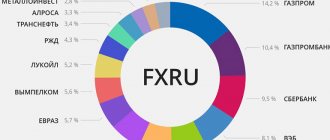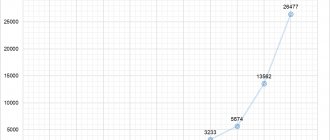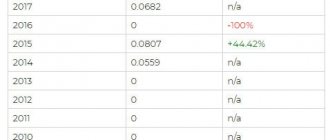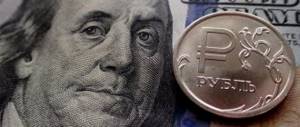The People's Republic of China ranks second among countries in the world in terms of economic development in 2020-2021. Only the United States was able to get ahead of the eastern country. And since 2014, China has been in first place in terms of GDP, according to purchasing power parity.
Share of the largest 15 countries in global GDP (PPP) according to the IMF
The article “Rating of the economies of developed countries of the world” can be read on our website by following this link.
general information
China's leadership in industrial production at the beginning of the 21st century is not disputed by the leading world powers.
Mining is carried out on a global scale. There is no shortage of anything. Gas, oil, ore, coal, uranium, etc. are mined. Moreover, some metals are almost never developed in other countries.
In most industries, China is a world leader. China produces cars on a particularly large scale; in less than 10 years, up to 20 million cars were produced. According to this indicator, it is ahead of both Japan and the United States.
At the same time, strong industrial performance is hitting agriculture hard, where many people are left without work. Behind the scenes, the Chinese government is encouraging unemployed citizens to emigrate in search of a better life. You can find out about the unemployment rate in China by following this link.
Students with a high level of knowledge can afford to study in higher education institutions abroad, for example, in America or Japan.
Highlights of transformations and reforms
Since the end of 1978, Deng Xiaoping has been carrying out transformations and reforms. To put it briefly, they had two main directions:
- for the massive involvement of investments;
- increase in exports.
The head assured that China's development according to the socialist model will continue, the reform will affect only the old economic system
Four stages of transformation:
- Agricultural reform - land was given to peasants, free trade in agricultural products was allowed.
- Industry - large and small enterprises were given the opportunity to plan their budgets themselves and move to self-sufficiency; large enterprises still remained under the supervision of the state.
- Taxes and the banking system - value added taxes, a unified income tax were introduced, a banking system was created, and unified exchange rates were created.
- Improving the new economic system - a market mechanism was formed, China's GDP grew from 12 to 14% per year (until it was stopped at 9%), now the country's power is being strengthened, the standard of living of the population is rising.
Currency of China
Among the local population, the country's currency is called "renminbi", that is, 'people's money'. However, on a global scale it is called the “Chinese yuan”. There are also “kopecks” - jiao (1 yuan = 10 jiao).
The yuan symbol is identical to the Japanese currency - ¥. The exchange rate is regulated by the People's Bank of China.
Many economic experts believe that China is deliberately undervaluing the yuan by 30–40% in order to make Chinese export goods more in demand.
Countries with a high level of development demand that the currency be freed, making it fully convertible, and not partially, as it is now. China is gradually changing its policy towards the yuan, but it is unlikely that drastic reforms can be expected in the near future.
Social Security
The development of productive forces made it possible to significantly raise the standard of living. This applies to both wages and insurance systems. In China, despite a noticeable increase in pensioners, the retirement age established back in the 50s remains the same: men - 60 years, women - 50 years (for employees - 55 years). The average monthly pension varies by region. For example, in Beijing it is 3,050 yuan. As noted in the documents of the 1st session of the 13th National People's Congress (NPC) of China (March 2018), the social insurance system in China now covers 900 million people, and various types of health insurance - 1.3 billion. Human. In addition, as part of the fight against poverty, subsidies for the rural and non-working population were increased - from 240 to 450 yuan per person per year.
Economy by industry
Agriculture
Agriculture occupies a high place in the economic state of the country in 2021. Moreover, China both produces and consumes products in extremely large volumes.
This industry employs over 300 million people. Although this area has its fair share of problems, the profit numbers are increasing every year.
There are no empty lands in the country - all are used for growing crops. However, suitable soil accounts for only 10–15% of China's territory.
Many lands are not irrigated, which creates additional difficulties. In addition, there is a lack of highly developed agronomy technologies, which is where the country lags behind others.
Almost a quarter of the fields are devoted to rice cultivation. China has no equal in the world in the production of this crop. Other popular crops among farmers include corn, cereals, soybeans, potatoes, tobacco and tea.
The Chinese are also actively involved in livestock breeding. In terms of the amount of available pork meat, chickens and eggs, the country is in a leading position on a global scale. The conveyor belt includes catching fish and breeding certain species in ponds.
Industrial development weakens agriculture. Only half of the village residents are engaged in their usual activities, while others go to the cities to earn money. The economic sector accounts for only 13% of the republic's gross domestic product.
Mining industry
China dominates the world in terms of coal reserves in 2020-2021. Leadership was achieved in 2010, when it managed to bypass the United States by extracting 3.2 billion tons of black gold. In 2004, the government entered into an agreement with the Republic of South Africa to liquefy coal.
Oil production also brings good results. In 2003, China moved to second place in terms of the scale of its imports. In 2006, figures for the country's available oil were made public: 18 billion barrels.
In a few years, reserves are expected to increase by 10%. China plans to phase out imported oil while working harder than before to extract it. As well as gas.
In 2010, it became clear that China itself could not provide gas to its entire population and enterprises. There was a shortage of 20 billion cubic meters. Five years later, the number of deficits had doubled. Since 2006, Australia and China have become partners, and supplies of liquefied gas began.
Industry of China on the map
At the same time, a terminal was opened in Shanghai in 2009, and two years later in Jiangsu and Liaoning. The demand for gas is growing every year, which stimulates active work and improvement of resource extraction.
In 2014, an agreement was reached between China and Russia on the construction of the Power of Siberia gas pipeline.
Energy
The year 1980 was a milestone in the energy sector. The level of energy consumption has increased sharply and, as a result, production has increased. The majority of resources are produced by thermal power plants, which is 80%. Hydroelectric power plants account for 17%, and only 2% of energy is generated by nuclear power plants.
China's energy sector has great potential, which has never been fully exploited. The main difficulty is the remoteness of sources from consumers. After all, most of the stations are located in the west and north of the country, while resources are sent to the coastal part.
The Chinese leadership is gradually trying to use environmental energy. Most stations operate on coal, which provides up to 75% of all energy, but this number is gradually decreasing. Coal is being replaced by oil and gas, for the production of which more and more funds are being allocated.
Nuclear energy is actively developing. According to the government's plan, up to 1.8 GW of additional capacity should be added to the energy system annually until 2021. At the end of the project, the capacity of all nuclear power plants in the country should be equal to 40 GW. Recently, new stations with a total capacity of 6.7 GW have begun to operate.
China unveils nuclear energy development plans for 2019
Renewable energy
In 2012, hydroelectric power plants generated 800,000 GWh of electricity per year. Wind farms produced 100,000 GWh, and nuclear units - 98,000 GWh.
China is seriously working on the introduction of alternative energy sources. For example, it is planned to launch more than 10 wind power plants, which should produce a power of about 100 megawatts.
The total installed capacity of solar and wind power plants in China exceeded 350 GW
Currently, photovoltaic power plants are being built, as well as conventional hydroelectric power plants. Today, the former provide a capacity of 16 GW, and the latter - 200 GW. In a few years, the total capacity is projected to be 500 GW.
Industry
Together with construction, industry accounts for approximately 47% of GDP. More than 22% of the workforce works in this area. China's production stands out from other countries and accounts for almost 20% of the entire world industry. In many respects, China is ahead of the United States.
China's manufacturing industries include the following:
- Electronics.
- Mineral processing.
- Nuclear energy.
- Cosmonautics.
- Aviation.
Moreover, 30% of all production belongs directly to the state. The PRC mainly controls heavy industry, military production and astronautics development.
The production of automobiles and computers occupies a major place in Chinese industry. Moreover, a high global status is achieved both due to the large number of consumers and the scale of production.
Almost half of the world's exports come from China. Metals are actively exported, so factories operate on an intense schedule. In addition, the country provides textiles and clothing to others.
Services sector
China's service sector in 2021 is a rather modest sector of the economy. Its profit indicators are inferior to many countries that are developing and have a similar standard of living. Therefore, the government is introducing reforms to improve the service sector, which will help provide jobs for the majority of Chinese and take the state to a new level.
In 2009, it was decided to increase investment in the service sector by more than 33%. Sales grew 15% that year. It is planned that over the coming years the share of added value of the service sector in GDP will increase from a third to 1/2.
The service sector in China in 2021 is represented by the following establishments:
- Food.
- Retail.
- Hotel business.
- Computer Science.
- Advertising and others.
Many shops and shopping centers are appearing. The main profit comes from sales of clothing, shoes, and toys. Office and telecommunications equipment are also in particular demand.
Transport
The length of China's railway is 91,000 km. In terms of its length, the Celestial Empire is second only to the United States. The majority of the country's citizens travel by rail.
Almost half of the route was electrified. China's railways have a standard size of 1435 mm. It is different in neighboring countries, so wheelsets are changed at the border. Only trips to North Korea do not require such a procedure.
Map of high-speed rail lines in the People's Republic of China
Much effort is currently being put into upgrading the railway for high-speed trains (350 km/h). There are also plans to pave the way to countries such as Laos and Myanmar.
Today, there is a functioning metro in 15 cities, construction has already begun in some, others are just in plans. Potentially, this transport will soon be available in 50 cities in China. The most notable metro lines are located in the following major cities:
- Beijing;
- Shanghai;
- Tianjin;
- Guangzhou;
- Shenzhen;
- Hong Kong.
In 2005, China had 3.3 million km of highways. However, asphalt pavement was available on only a third of the highways. The rest consists of gravel and soil. The main routes are called godo and have three-digit designations.
Many Chinese prefer to travel by car. There are many cyclists in the country who are not ready to switch to less practical transport. There are special lanes on the roads for their movement.
China National Highway Map
China has over 500 airports throughout the country, served by 27 local airlines, and about 1,500 aircraft in operation.
Rivers and seas are excellent for freight transport. There are approximately 2,000 ports in China, 130 of which have international status.
There are even more river ports. Each year they all accept cargo weighing over 1 billion tons.
Communication and Internet
In 1987, the first mobile phones began to appear. A few years ago, over 1 billion citizens used mobile communications.
The Internet is becoming more and more popular in China. For example, in 2010, 420,000 people used the network. However, this number represents only 32% of the total population.
mass media
The media are represented by 7,000 magazines and 2,000 newspapers. Printing is carried out in printing houses, of which there are 25,000 in the Middle Kingdom.
Main news is regularly presented in printed form by the People's Daily (People's Newspaper). Its publishing house is controlled by the Chinese government. Other newspapers also have large circulations: Beijing Daily, Guangming Daily.
Xi Jinping congratulated the People's Daily newspaper on its 70th anniversary
News processing is handled by the state.
Radio broadcasting is still popular in China . It is carried out by 3,000 radio stations. The main state channel is the Central People's Radio Station, but each region has its own.
China International Radio is available for listening, broadcasting in 38 languages. State TV is supervised by China Central Television. There are many local channels available; programs in Russian and English are provided for tourists and guests of the country.
Science and technology
The Chinese government allocates a lot of funds for the development of science. This has resulted in great advances in technology. Thanks to scientists, it was possible to launch a program to invent nuclear weapons and build power plants.
The development of space technology dates back to 1970, with the launch of the first satellite. In 2003, a manned flight into space was carried out. The Shenzhou 5 spacecraft was piloted by Yang Liwei.
Chinese space station Tiangong-1
In 2011, the Tiangong-1 orbital station began its work. The PRC has repeatedly launched flying objects to the Moon.
International trade
The PRC economy is largely thriving thanks to a competent foreign policy. Most of the products produced are initially manufactured for export to other countries. However, now demand is growing in the domestic market.
In terms of export volume, China ranks first in the world market. Thanks to foreign trade, the country receives 80% of foreign exchange earnings. In addition, about 30 million residents of the state are involved in the preparation and dispatch of export goods.
China has more than 182 partners in the world. Trade with Japan, the USA and Western Europe accounts for 55% of trade turnover.
Protection of public deposits
The deposit protection system is part of the country's social and financial security system. All savings must be protected from risk by a separate authority. Deposit protection reduces the risk of risks and helps increase confidence in banks.
Due to the need to comply with WTO requirements, the PRC has a lot to do to eliminate the shortage of qualified workers and create a high-quality supervisory system.
For transparency purposes, the central bank of the Republic of China has implemented a computer system with short reporting periods. Effective supervision will be ensured by eliminating credit risks, which will significantly reduce the share of debt obligations.
Cooperation with the Russian Federation
Although Russia and China have been cooperating steadily for many years, recently trade turnover has been gradually increasing. 2021 saw an upswing and a record turnover of over $100 billion was achieved in 2021.
Volumes of crude oil supplies by Rosneft to China
The majority of exports from the Russian Federation are oil and mineral fuels. Wood, non-ferrous metals, shoes, etc. are sent in small volumes. A large number of cars and components are delivered from China to Russia. Chemical products and textiles are also imported.
Foreign banks
Foreign banks and their branches are active in China. Since 1979, foreign organizations have been allowed to establish representative offices in special economic zones. But they could engage exclusively in market research, economic analysis, and establishing contacts with the Chinese authorities.
The largest number of foreign banks open in areas where companies with foreign investments are concentrated.
Cooperation with Asia
Trade turnover between China and Central Asian countries in 2012 amounted to almost $46 billion. Kazakhstan and Turkmenistan are the country's main partners. Chinese investors are actively cooperating with these countries.
China's cooperation with Asia
Most investments concern the extraction of oil, valuable metals and minerals, agriculture and various manufacturing.
The Nathu La Pass contributes to strong trade relations between China and India. In 2013, trade turnover between them amounted to $65 billion. Cooperation with Iran is rapidly developing, and it is planned to reach $100 billion in trade turnover.
Dynamics and prospects for economic growth in China
The state's trade policy will soon be modernized. Officials face a difficult task. Bring sharp and unreliable growth to a stable position without allowing a sharp decline.
The authorities' problem is the imbalance accumulated over the years of rapid development. To arrive at the correct development model, you need to change or rebuild its structure. This process requires the intervention of the public policy sector and time.
China faces the following challenges:
- Maintaining the rate of increase in growth percentage.
- New reforms supporting agriculture and agriculture.
- Absence of a sharp decline or fall in sectoral economic indicators.
Foreign experts agree that the problems accumulated over many years will lead to the collapse of the system. Years of active prosperity will have to be paid for or every effort will be made to stabilize such a difficult situation.
Cooperation with the USA
The two large states of China and the United States form an important bilateral alliance in the world. At the same time, in 2021, China decided to impose import duties on American products. Moreover, the number of goods will soon reach a thousand, and the highest tax is 25%.
The United States, in turn, limited the import of high-tech goods, citing a threat to national security. Experts predict further conflicts as countries compete for leadership in global economic performance.
Ecology
The rapid development of China also affects the environment. Pollution levels in air, rivers and cities are among the highest in the world. One of the main problems is air pollution, especially in large cities, which reaches catastrophic levels. In two thirds of cities, the maximum permissible air pollution is exceeded five times. About 80% of China's thermal power plants run on coal. Dwindling supplies and deteriorating water quality are another major environmental problem in China, where 75% of rivers and lakes and 90% of groundwater are heavily polluted.
Required documents
To open an account, you will need a foreign passport, a telephone number for communication in China, and 20 yuan - the cost of a credit card. You will also need to fill out several forms, indicating your passport number, your occupation and other supporting information.
It is quite difficult for foreigners to get a loan. To guarantee the return of allocated funds, banking organizations require the presence of a guarantor - a citizen of the People's Republic of China. An amount of several thousand US dollars is also established, which is used as a “non-burnable balance”.
Entrepreneurs need to create a subsidiary to open an account and take full advantage of the local payment system. Its absence creates significant difficulties for businessmen wishing to operate in China.











